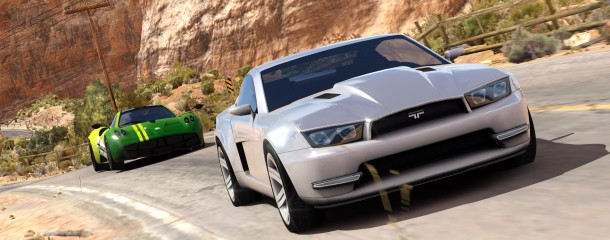Our Verdict
Almost everything youd want of a TrackMania, but as a TrackMania 2 it leaves a lot to be desired, and hopefully fixed.
PC Gamer's got your back
After all this time, still nothing compares to that opening sprint. One car, purring on the starting block, becomes a swarm of 20 when the countdown hits zero. Latticed tyre tracks. Wheels clipping through bumpers clipping through bonnets. A turn is coming: easy left into easy right, then an exit into a suicidal drop. Three degrees off and you'll fluff the angle for the jump at the end. But you've trained for this – and so, as the others make their mistakes, you glide dead-bang into the tunnel. Into the mouth of a mountain.
Come to mention it, nothing really compares to the middle of a TrackMania race, either, when everyone's thinking that, yes, this is the lap they get it right. Or indeed the end, when some naughty terrain ensures that no one crosses the finish line forwards, horizontal, or at the same altitude as their windscreen.
If you've played the series before, you'll know this isn't quite how it works. A typical 'race' doesn't end at the finish, but rather somewhere in the melee of often disastrous, constantly resetting, occasionally awesome time trial attempts. Everyone in a session races with and around one another – through one another – but only ever against the clock. They learn from their own mistakes, and from others that send cars bouncing off the approaching scenery. And, boy, do they bounce.
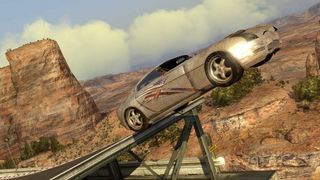
Playing the game accounts for one third of TrackMania. The other parts are creating (tracks, cars, music, minigames, general Eurotrash oddness) and sharing (via in-game personal storefronts, forums, YouTube, wherever). It's been this way for eight years now, and the numbers involved are massive. Today, however, the one that really matters is the creating.
What does it mean when a game that's been updated plenty of times already decides to call itself a sequel? If you ask Nadeo, it means the start of a new adventure. Season two, episode one. TrackMania 2: Canyon includes just a single terrain type, a single car/handling model, and a single 'pure' racing mode. No platforms or puzzles. No cities, islands, or stadium. The changes are seemingly few, but in a game of degrees and milliseconds they can feel huge.
The handling is no longer that of a toy racer. The new car is heavier, throatier, and it drifts big-time. Unlike the first game's vehicles, it has no air-brake. That means greater surrender to the science that kicks in when, after all that panicked steering, you finally hit a jump. The tracks feel more natural, the cars animal. Is it better? Try 'different', like Stunt Car Racer meets Daytona.

The Canyon, for a place made of pluggable building blocks, is magnificent. A Scalextric of the gods: bored into mountains, soaring over lakes, twisting against rhyme, reason, and gravity beneath a Segablue sky. And the light: baked into the rock, lost in the cracks, gluing it all together and bringing it to life. It's a static environment, too, which means that it's all precalculated by the track editor. Result: you don't need godlike hardware to play it, even in the new splitscreen mode.
As you can tell, I get rather high on TrackMania. It appeals to my inner geek with all its outward-facing technology. If I want to take a screenshot, I can spend hours on the camera angle alone, or on adjusting the replay timeline of every car. Then I can impose – heavens – 100x antialiasing on the scene. I can pretend to know what 'GPU/CPU synchro' really means. I can take longer making a movie about driving in circles than it took to make Inception. I can build and paint cars and then make myself some Planets, the game's new virtual currency. I can build a casino to waste them in, or a bank to lend them to someone else. And a digital bailiff to go smash that person's fingers? Probably! I can – which is to say I could – script all kinds of marvellous things. If only someone would show me how.
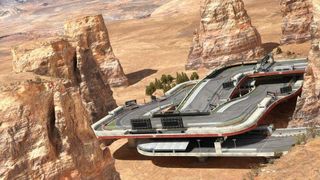
Ah yes, the comedown. Being a 'community-driven' game by a studio so small it could barely populate a race, TM2 has no manual. Not quite, anyway. Not yet. Instead it has a wiki, designed to silence the abject what-the-fuckery from newcomers on the forums – but it raises more questions than it answers. Grilled about the lack of documentation, a studio spokesman posted: “No one at Nadeo knows every feature of the game. We are about twenty people, adding sometimes more than five or six features a day (like keyboard shortcuts, buttons, player page options, new dialogue boxes, maniahome...). I don't know a single thing about the Media Tracker, and nobody else than me knows the whereabouts of the ManiaScript.”
This is the candour people love about Nadeo – even when, as happened recently, a power cut in France made most of the game temporarily unplayable. The angry and confused were then told by its second-line support people, the community elders themselves, that they should wait in silence or discover the rest of the game. Build a car, edit a replay, or toy with the slightly-improved track editor. Which is fine if you're a veteran, or have a decent grasp on the game's sprawl of user-developed content.
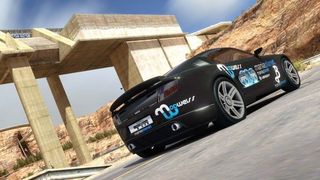
But what if you don't? Sure, the track editor is simple in principle, but it can seem anything but when nothing you select or do conjures a tooltip, warning, or log entry of any kind. It gives you the right number of tools and blocks to 'get it' quickly, then get inventive and build tracks like the official ones. But it's far from painless when it fails to identify what you're trying to do (drive a road through a cliff, maybe), or even hazard a guess. An entire layer of things we take for granted is missing from this toolset, requiring players follow an online paper trail of variously handy tutorials.
Part of the problem is that Nadeo are so active in their community – married to it, effectively – that they think the game is spoken for. A major change as to how official time trials work, for instance – you have to get the gold medal time in practice first, then wait five minutes between attempts – was left a mystery for new players. Also, as with older games in the series, large portions of its 'interface' are just jumps to websites and forums. Others might prefer the term: 'massive bloody holes where the user interface should be'.
Don't get me wrong: TrackMania 2 is a beautiful, heart-stopping, narcotic racing game. Its readiness to just sit there as operating system furniture, idling in the background before roaring to the fore, is a credit both to its engine and its design. To the PC, no less. Better still is how it has embraced different control schemes – the drift mechanics favour braking with Ctrl, or tweaking the deadzone on a 360 pad – while keeping the playing field level. And, for all that will be said about the changes to the handling, there's always TrackMania United Forever. The TM community is huge, and no stranger to divided loyalties. Why be frightened of change?
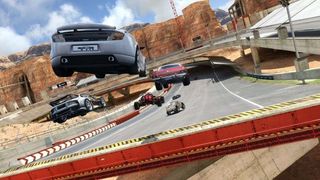
I've built tracks and made 'paks'. I could tell you just what speed of footage creates just what kind of motion blur, and the advantage of using a Hermite-interpolated custom camera. I am a proud TrackManiac. But this game is not for everyone, and I'll even go one further: after all this time – with the name of one of the world's biggest publishers splashed across cars and tracks – I'm not sure it's enough.
Maybe Nadeo have some strange Peter Pan complex. Maybe Ubisoft have some strange 'what the hell have we gotten ourselves into?' complex. Whatever the reason, TrackMania should have been ready at launch. Obviously there's a whole lot more to come, but basics like the interface should have been immaculate, or at the very least presentable. It should have had tutorials, pop-ups, tooltips – the works – springing from every mode and button, not sitting on someone's esoteric fan site. It should have been bug-free and user-friendly, yet its editors are quirky at best. It should be conquering the world.
Review by Duncan Harris.
Almost everything youd want of a TrackMania, but as a TrackMania 2 it leaves a lot to be desired, and hopefully fixed.
PC Gamer is the global authority on PC games—starting in 1993 with the magazine, and then in 2010 with this website you're currently reading. We have writers across the US, Canada, UK and Australia, who you can read about here.
